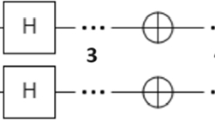Abstract.
The Tetrahymena group I ribozyme catalyzes the cleavage of a phosphodiester linkage in specific sequences of RNA. This phenotype can be used in an in vitro selection-amplification process to evolve variants that are capable of RNA catalysis in the presence of Ca2+ as the sole available cation. With sufficient genotypic characterization of the population as it evolves, we have a rare opportunity of observing how the information stored in an evolving population responds to selective pressures, such as the requisite of catalyzing RNA cleavage in the absence of Mg2+ or Mn2+. In the present work, we examine the population dynamics of this system using sequence information from previous experimental work. We focus on two issues: How does the information content of the population evolve? and Is the system evolving as an adaptive walk on a rugged landscape? To investigate these questions, information theoretical parameters are examined. The evolution of the population is visualized by mapping the genotypic frequency distribution onto a two-dimensional projection of sequence space. The projection was generated using Hamming distances from the wild-type, starting sequence and a catalytically successful, evolved sequence. The evolution of the information content of the system was measured by calculating the grammar complexity of the observed sequences, which showed a very slight increase over 12 generations. This result is consistent with the system performing a search for a local optimum. The dynamics of the population in this sequence space is consistent with an adaptive walk on an uncorrelated, or ``rugged,'' genotypic landscape, despite the observation that the phenotypic progress of the population appears smooth. The relative insensitivity of the phenotypic landscape to the variegation of the genotypic landscape suggests that the former is buffered against variation in the latter through various epigenetic-like mechanisms.
Similar content being viewed by others
Author information
Authors and Affiliations
Additional information
Received: 11 November 1999 / Accepted: 11 February 2000
Rights and permissions
About this article
Cite this article
Lehman, N., Donne, M., West, M. et al. The Genotypic Landscape During In Vitro Evolution of a Catalytic RNA: Implications for Phenotypic Buffering. J Mol Evol 50, 481–490 (2000). https://doi.org/10.1007/s002390010051
Issue Date:
DOI: https://doi.org/10.1007/s002390010051




